New Release Now Supports Exchange 2013 Mail Level Backup
New Release Now Supports Exchange 2013 Mail Level Backup
The latest release of our Online Backup Manager now supports Exchange 2013 Mail level backup.
If you have recently upgraded to Exchange to 2013, you will need the latest version to backup individual items within your Exchange database.
Version required for 2013 Exchange mail level backup is 6.15.0.0 or aboveTo find out the version you currently have installed, login to the backup client and click on the “?” (About SDSL) which will show you the installed version you are running.
You can download the latest version from /support/downloads
You will also nee the new Microsoft Mapi http://www.microsoft.com/en-gb/download/details.aspx?id=39045
If you haven’t used our mail level backup before, I would recommend you call us for assistance as the initial set-up isn’t as simple as just selecting the source. For example, Exchange 2013 is 64 bit application, but Microsoft MAPI only supports 32bit, so you have to open our backup client in 32bit mode to select the mailboxes. Once selected and saved, it will just work.
Feel free to call us on 0844 406 8094 for more information and help
Cryptolocker – Are you sure you’re protected?
So if you backup your data offline you’re safe – right?
Cryptolocker is now said to have infected over 250,000 PCs, with the UK being second most infected country at 19% just behind the US at 23%.
So if you backup your data offline you’re safe – right? Well actually, maybe not. Read the following example of how you’re offsite backup may only contain Cryptolocker encrypted files
Let’s say you backup everything in c:\docsYou backup this folder twice a day – Midday then 7pmIt’s the weekend tomorrow and then have a well deserved week off.Without you being aware, your PC has been infected with Cryptolocker. It’s searching your hard drive and network shares for files to encrypt as you work.
Without you being aware,your PC has been infectedwith Cryptolocker
It’s the end of the day. You go home, leaving your PC on as normal.The backup runs it’s 7pm but it’s now backing up all your files again as they have changed thanks to the encryption by Cryptolocker.The files are seen as updated files, so the original are moved into retention on the offsite servers. Your backup only has a 7 day retention period!!!You come back to work after a week off only to see the Cryptolocker splash screen.You try to restore your data, but all you can restore are Cryptolocker encrypted files.You select files as far back as you can, but because all files were modified over 7 days ago by Cryptolocker the good files are gone!
You have to be unlucky for this to happen, but it could happen, and trust me, it has!
If you run an offsite backup account with us or any another provider, make sure you have a long enough retention period to cover your data before it’s too late. Cryptolocker will be around for some time so please check.
So why wouldn’t you just set the retention window to unlimited.
Well, let’s say you have a 1 meg word file. Let’s forget about compression just to make the math simple.Day one you create the file and back it up. That’s 1 meg stored off line.Every day you modify this file so after a week you have 7 megs+ stored offline.
backup account could contain365meg + worth of storagejust for a one meg file.
This continues everyday. By the end of the year, your backup account could contain 365meg + worth of storage just for a one meg file.Obviously, you have more than one file to backup. Work the same out for all your other files and the data stored offsite soon adds up and so will the cost!
Retention period will work by removing old copies of files. Let’s say you have a 30 day retention. On the example above you will have the original file, then the last 30 days worth of changes to that file, meaning you’re only storing 30 meg rather than 365 meg.
We compress all files so a 1 meg word file would end up at least 50% of that, but that’s not really the point here. The point is, you may think you’re safe, but may not be safe enough. It will only take a minute to check, or if you’re a SDSL customer, call us on 0844 406 8094 and one of our technical staff will happily help you.
I hope this helps someone out there!
Support for XP and Office 2003 Ends 8th April 2014
perpetual state offear from ‘Zero-day’ attacks
You may or may not be aware of this, but support for both Windows XP and Office 2003 ends on 8th April –that’s 26 days until all computers (and users) running Windows XP and Office 2003 will be in a perpetual state of fear from ‘Zero-day’ attacks.For those not familiar with this phrase, a Zero day attack is a virtual attack on your computer that targets flaws (or vulnerabilities) in the software that developers have either not yet had time to patch (fix) or are not aware of. What makes these attacks a thing to take into consideration if you’re still running Windows XP or Office 2003 after 8th April is that, with no new updates – more importantly Security Updates – vulnerabilities that are discovered and patched in updates for the current versions of Windows and Office can be reverse engineered and tested against the now end of life Software to see if the flaw is shared – and therefore not been patched in the update.Some estimates suggest that nearly 488 million PCs worldwide still run Windows XP and are therefore vulnerable to attack.
contact yourIT support
So in the interest of personal and professional safety we would advise that you contact your IT support to enquire about an update and make sure that all Backup systems you have in place are working – just in case.
What is D2D2C?
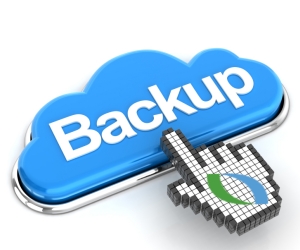
If you’ve been looking for Cloud Backup Service also known as BaaS (Backup as a Service) you may have also come across D2D2C.
D2D2C stands for Disk-to-Disk-to-Cloud and gives you a local backup as well as a cloud backup. It uses a local storage device like a USB drive or a NAS Device to spool the backup too, this then uploads to the cloud . Some systems will remove the local stored backup after it’s transferred to the cloud, others will keep the last backup so you have a local recovery for faster restores.
Both of our cloud backup products can / will use D2D2C. With our File Backup Client, it’s an option you can select, but with our Bare Metal product you must have local backup. This enables fast local file / folder restores as well as Virtual Boot where you can boot a backup file into a live system within minutes!
How Can I Try And Compare Overseas Backup Providers to UK Backup Providers?
I’ve been trying to find a simple way to try and help a UK business decide between a UK Backup provider and one of those extremely cheap overseas Backup providers. I thought of maybe comparing a sports car to a family saloon or comparing a five start restaurant to a fast food restaurant, then suddenly the answer presented it to me from my dear wife last night.

She bought a watch from a well known online shopping site for a mere £1.78 which included delivery all the way from China. It turned up 20 days later. It worked, it kept good time and actually subject to taste, it looked pretty good. But last night she told me its stopped working; well it worked now and then. “Who should I contact” she asked, “I don’t know, try the place you bought it from” I replied. “I have, but I have to contact the seller in China” which is where the conversation ended followed by the watch being thrown into the bin.So where am I going with this?Well over the last few months, we have been fighting to get our pricing correct, but when up against users and possible resellers opting for backup service over seas based purely on price and not service, we can’t compete. One person said I can get 2TB for £300 per year while another states 5TB for £30 per month. Sure, there will be some hidden costs in there somewhere, along with the usual “fair usage policy” which catches loads of users out, but still far cheaper than we could ever offer. So how does this compare with the watch? Well, ask your self a couple of questions.
1. How easy is it to contact the provider when you have a problem?2. How fast can you backup / restore from their servers?3. Realistically, will it actually work for the amount of data you have?

At least if your data is stored in the UK, most backup providers allow you to download the data as quick as your internet speeds allow without long latency delays cutting restore speed in half.Also, like us, some backup providers offer free seeding of the initial backup along with free restores via USB for large amounts of data. Can you imaging this from a US based company to a UK user?
To sum this up, it goes back to the old saying “You get what you pay for” In my wife’s case, a broken watch.
I’ve been running some simple tests backing up a 200GB file. Firstly to an overseas backup provider, then to our own servers. You will be shocked at the difference. I will blog this next.
Fix Web Restore Applet in Chrome after April 2015
Since Chrome version 42 (released April 2015), the ability to auto install / run Java was removed resulting in our cloud restore application failing to launch in Chrome
To enable the web restore applet to work, please do the following
Enabling NPAPI in Chrome Version 42 and later
Additional configuration step is required to continue using NPAPI plugins.
- In your URL bar, enter:chrome://flags/#enable-npapi
- Click the Enable link for the Enable NPAPI configuration option.
- Click the Relaunch button that now appears at the bottom of the configuration page.
Enhancements for our Resellers
We have a couple of new features for our resellers when they login to our portal.
Resellers can now view users storage in an easy to read line graph to show clients usage history. This page shows total storage and also include their clients retention data.
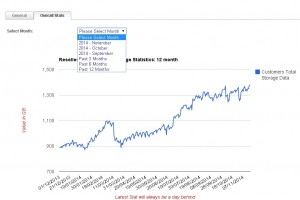
We have also added a nice new graph to show all clients total data with a 12 month history window.These new features will show within your portal by the end of Monday if not already visible.More enhancements to follow shortly…..Have an enhancement request? email support@safedatastorage.co.uk
Top 10 Users Added for Resellers
You asked, so we have listened.
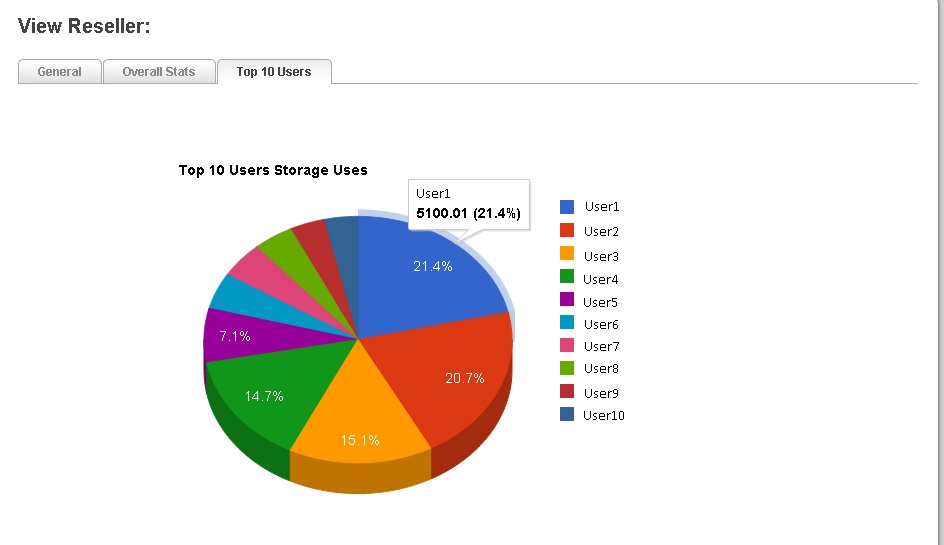
A number of resellers requested a way to easily view there largest file cloud backup accounts, so we created a “top 10 users” pageHere it shows in a easy to view pie chart their top ten users. click on the user to take you straight to the client account to view or modify.
Next request in progress, Image Backup usage graphs.
Image Backup Stats added to Resellers Panel
Three additional statistics for our re-sellers when they login to our portal.
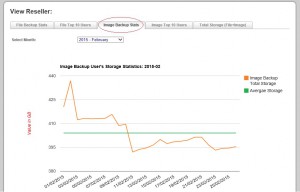
New Image Backup Stats to easily view all your combined Client Image backup usage. View by current month, last month, last 3, 6, 9 and 12 months stats.
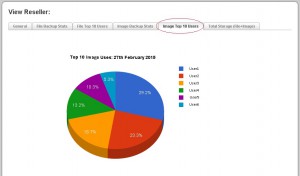
“Top 10 Image users” See you’re top 10 Image Backups users in a clear easy to read pie chart.
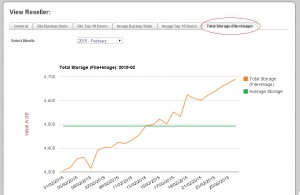
Total Storage Stats Image + File Backup Usage. Now resellers can see their total storage with us, not just file backup. Again you can view by current month, last month, last 3, 6, 9 and 12 months stats.
Don’t send successful emails
Excluding successful emails, as requested.
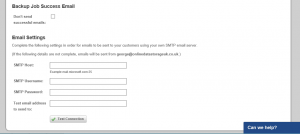
As requested by a number of partners, due to ticket systems receiving all backup emails, you now have the option “Don’t send successful emails”.
It is a simple tickbox that is located in the “settings” tab of your partner panel. Having the ability to only receive failed backup emails means that you can quickly get any backup problems resolved.
Recent Posts
- Announcing our new Veeam partnership and capabilities
- Changes to Microsoft Authentication for Exchange Online C2C Backups
- What is C2C backup?
- Three Main Types of Schedule Backup Software
- Secure Your Business with Right Backup Software
- Backing Up Your G Suite Data
- Safe data storage for educational institutions
- Why you need backup for Office 365?
- Online backup for a small business
- Cloud Storage for Charities - What are the Options?
Categories
- All
- Cloud Backup (21)
- Cloud Reseller (9)
- Cloud Storage (11)
- Data Recovery (6)
- Data Storage (10)
- DR Services (1)
- Education Backup (11)
- Fun (1)
- In the Community (1)
- In The News (10)
- ISO 9001:2015 certification (1)
- IT Resellers (8)
- News (11)
- Old Posts (75)
- Online Backup (12)
- Online Data Storage (6)
- School Backup (9)
- Secure Online Storage (11)
- Technical (10)